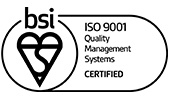Heat stress occurs when the body’s natural cooling mechanisms cannot effectively regulate internal temperature, leading to a variety of health issues. As well as air temperature, factors such as work rate, humidity and clothing worn whilst working may lead to heat stress.
We have been having discussions with many of our offshore workers around the topic of heat and managing heat stress lately. As the summer months are approaching for many locations, temperatures have risen significantly. Heat stress can pose a significant risk to the health and safety of offshore workers so we wanted to take the opportunity to raise awareness of this and the importance of employing effective strategies to manage and mitigate the risks associated to heat stress in the offshore environment.
Symptoms of Heat Stress:
- Inability to concentrate
- Muscle cramps
- Heat rash
- Severe thirst – a late symptom of heat stress
- Fainting
- Heat exhaustion – fatigue, dizziness, nausea, headache, moist skin.
- Heat stroke – hot dry skin, confusion, convulsions and eventual loss of consciousness. This can result in death if not detected at an early stage.
Ways to Protect Yourself and Others:
Stay Hydrated – Maintaining proper hydration is crucial to combat heat stress. Drink cool water frequently and in small amounts. Avoid caffeine and alcohol as they contribute to dehydration. Consider carrying a personal water bottle and regularly refilling it from accessible sources.
Know the Symptoms– Be aware of the symptoms of heat stress in yourself and your colleagues. Promptly report any concerns to your onboard medic or supervisor so that rapid action can be taken. Education and awareness will help you to recognise potential risks and take appropriate action.
Take Regular Breaks – Take advantage of rest breaks to cool down. Seek shade or cooler areas during breaks to lower your body temperature. Use this time to rehydrate and regain energy for the next working period.
Implement Work-Rest Cycles – Adopt a work-rest schedule that allows for sufficient recovery time. Alternate physically demanding tasks with lighter duties to minimise heat accumulation in the body. Use rest periods strategically to cool down and engage in activities that promote relaxation and rejuvenation.
Dress for the Heat Where Possible – Although there may be limitations with PPE etc, try to wear lightweight, breathable clothing where possible. Choose light coloured garments that reflect heat rather than absorb it. Protect the face, neck and head from direct sunlight. Don’t forget to apply sunscreen with a high SPF to exposed skin areas.
Stay Informed – Stay updated on weather forecasts and heat advisories to be prepared for extreme conditions.
Follow Procedures – Always follow worksite procedures which have been put into place for your safety.
Call for immediate medical assistance if you or someone else has any signs of heat stroke as this can result in death if not detected at an early stage.
Managing heat stress when working offshore is crucial for health, safety and overall wellbeing. By implementing these strategies and adopting a proactive approach, you can effectively protect yourself against heat stress whilst still maintaining productivity. Remember to prioritise hydration, stay vigilant, support fellow workers and always communicate any concerns to ensure a safe and successful working environment.
Thank you!
The EMS Team


